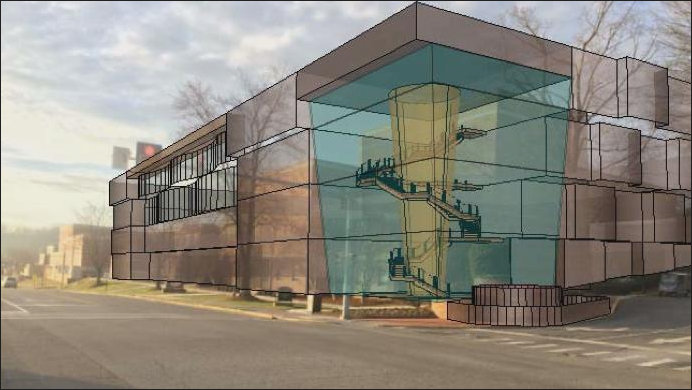Governor Ralph Northam has allocated nearly $101 million in the next biennial budget to build the “Center for Adaptive Innovation and Creativity” at Radford University. If approved by the General Assembly, the allocation would represent the largest capital construction project in the history of Radford University, both in terms of total funding and square footage.
According to the Roanoke Times, the facility will include classrooms, studios and exhibition spaces, clinical research and laboratory space, and multi-use environments such as maker spaces, computer centers, and simulation and virtual/augmented reality labs.
That’s an eclectic mix of facilities. What, exactly, will the Center for Adaptive Innovation and Creativity do? According to a Radford University document, the Center will advance an inter-disciplinary approach to health and the arts. As an example of the kind of activity that would take place there, the document says that nursing students could interact with actors trained to simulate patients.
Perhaps I’m being uncharitable here, but this sounds like the kind of project that gets funded when the thinking in the governor’s office goes something like this: “Well, we’re giving money to everyone else in higher ed, and it’s been a while since we’ve tossed Radford a bone, and this is at the top of their wish list, so…”
When first announced in January 2018, the Center was expected to cost about $79 million. Now, for reasons not specified in the Roanoke Times article, the price tag has grown to nearly $101 million. But the Radford administration is pitching the project as a money saver. It will replace two older buildings, McGuffey and Porterfield halls, where the state had spent $8 million in recent years to replace failing infrastructure. The buildings are anticipated to cost another $6 million to $8 million in the next five years.
Radford describes the center as a facility that “will provide space for a radically different approach to health education and interdisciplinary research, featuring creativity at the center of the learning process.” Apparently, interdisciplinary health/art initiatives are occurring in other states. For example, the University of Michigan Medical Arts Program “aims to enhance medical students’ ability to provide high quality, humanistic clinical care through experiences and analysis of the musical, theatrical, literary and visual arts.”
Radford sees four areas of potential collaboration:
Clinical simulation training. By interacting with trained actors, nursing students could work on their communication skills, relationship building, information-extraction, and clinical reasoning. “Trained theater students” could participate as well in “counseling simulations” in the Department of Communications Sciences and Disorders.
Physical therapy. Physical therapists can apply their skills to “the prevention and treatment of injury associated with performance art.” Examples include “postural intervention” for those who perform in Studio Art; ergonomic assessment and intervention for those in Studio Art and Graphic Design; and movement assessment and treatment for those in Dance, Music, Theatre & Cinema.”
Speech language therapy & music therapy. The idea is to incorporate therapy into the treatment of children and accident victims with language disabilities.
Autism services. Students and faculty could use art and theater for autism therapy, with a focus on nonverbal communication.
Bacon’s bottom line: I imagine that some of these potential collaborations have value, but a number of them sound pretty loosey-goosey to me. Moreoever, I fail to find any justification in the Radford material that these experimental collaborations require a $101 million, state-of-the-art facility with maker spaces and artificial reality labs. It sounds to me as if Radford said, “Let’s load up this puppy with everything we can think of. Let’s ask for waaay more than we think we can possibly get, and see what we the moneybags in Richmond to give us.” And rather than negotiate for something reasonable, the Northam administration just decided to give Radford everything it asked for.
You know you’re reaching a peak in the economic cycle when state government can throw money on an extravagance like this. Funding the Center for Adaptive Innovation is a sure sign that the Northam administration has abandoned any pretense to cost-benefit objectivity, and has nothing more in mind than placating special interests.


Leave a Reply
You must be logged in to post a comment.